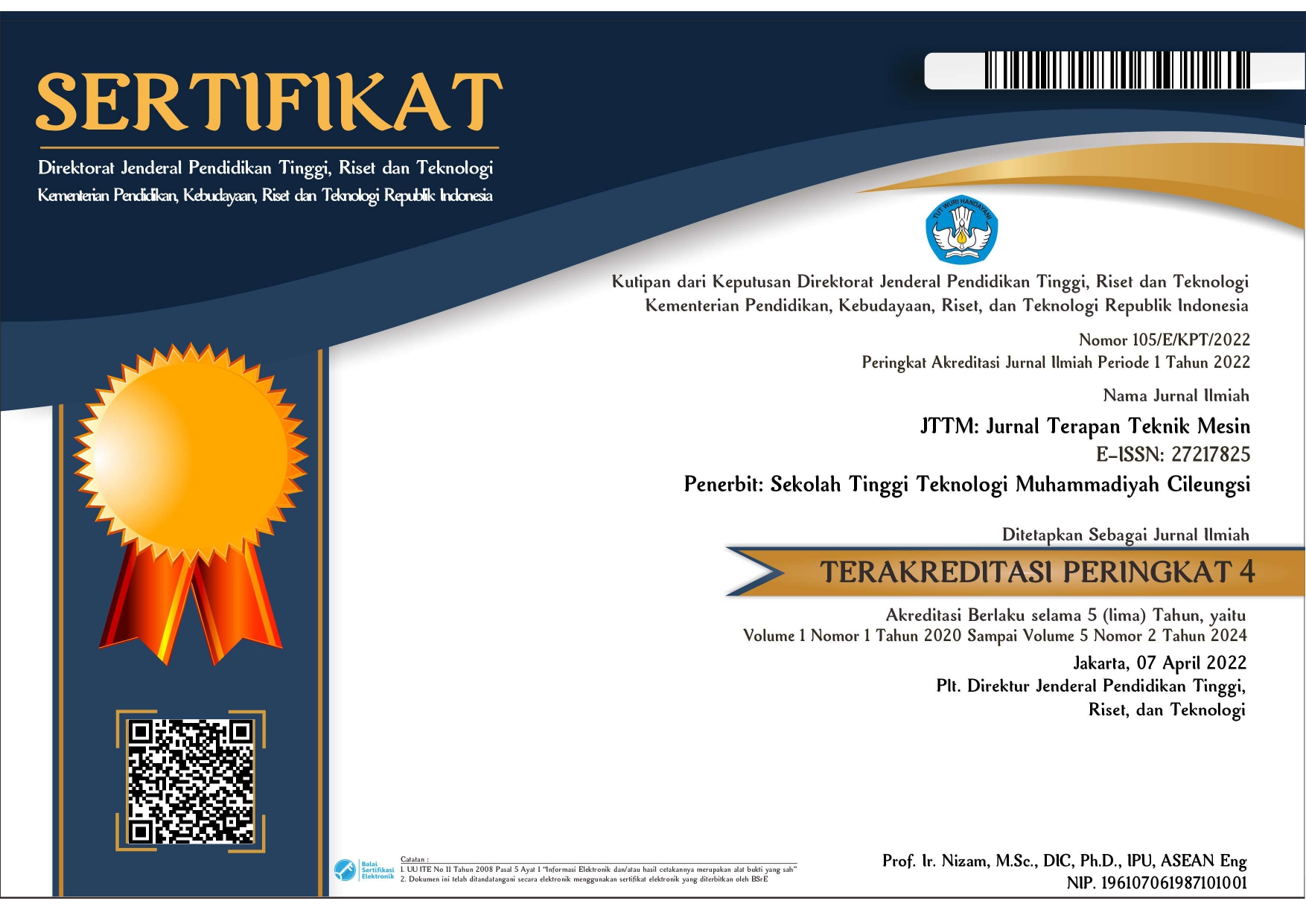Impact of sulfur compounds on motorbike wheel damper rubber manufacturing materials with 3 Phr, 4 Phr, and 6 Phr compositions
Abstract
Rubber force is a simple but important thing for vehicles. This component is located in the rear wheel drum which is directly connected to the gear. Many factors influence the damage to this component. This research aims to determine how much influence stearic acid has on the hardness and tensile strength values of the lifting rubber compound. The materials used to make the compound are rubber smoked sheet (RSS) and synthetic rubber mixed with the chemicals stearic acid, black carbon white oil, ZnO, paraffin wax, MBTS, comaron resin and sulfur. These ingredients are mixed using two roll mixing until they combine and form a compound sheet. To determine the maturation time of rubber, a rheometer process is carried out. The next process is vulcanization of rubber using a mold that is pressed at a temperature of 1600C and a pressure of 150 psi. Tensile testing uses rubber testing equipment with SNI ISO 37: 2015 (IDT–2011) standards. Hardness testing uses a tool with a Shore A hardness tester scale with ISO 7619–1:2010 standards. Based on the results of the tests carried out, the addition of sulfur has a very significant effect on the hardness value and tensile strength value. For the hardness value of compound 3 with a sulfur composition of 6 phr, it has the highest hardness, namely 77 Shore A and the lowest value is composition 1 with a hardness value of 65.6 Shore A. The highest tensile strength value is 15,394 N/mm2 in composition 1 and the lowest value is in composition 3 with a value of 11.44 N/mm2
Copyright (c) 2023 Pramuko Ilmu Purboputro, Sartono Putro, Subroto

This work is licensed under a Creative Commons Attribution-NonCommercial 4.0 International License.











